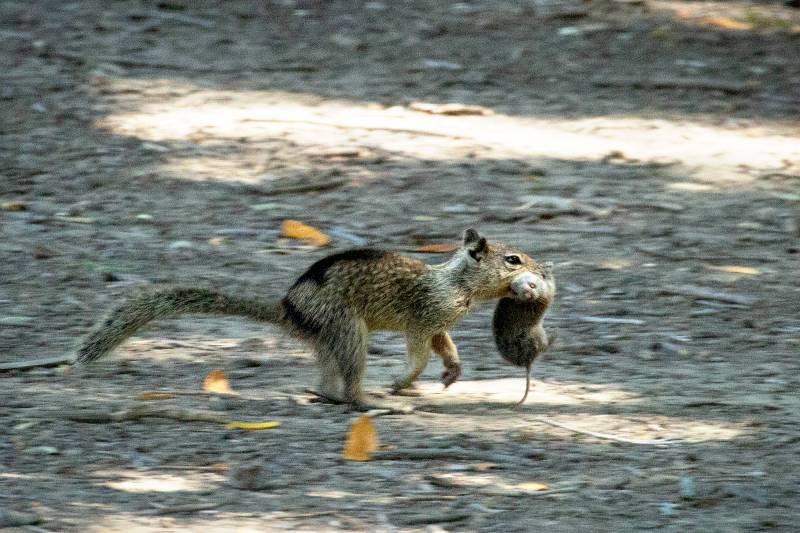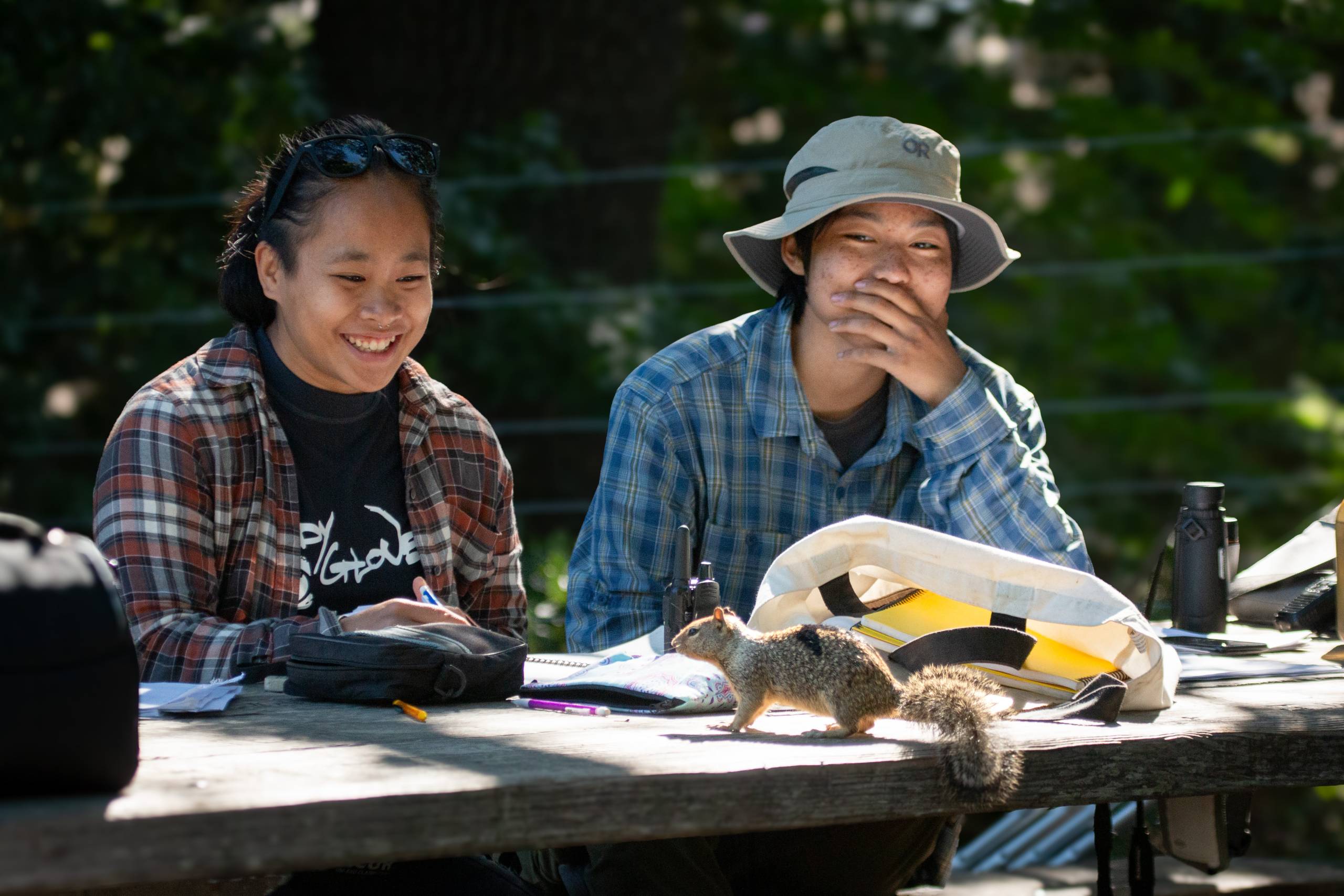Its fluffy body stays low to the ground, silently stalking its prey. While the small rodent remains unaware, the predator goes in for the kill, pouncing quickly, pinning the animal to the ground before brutally decapitating it and starting to feast.
It’s all light work for this unlikely predator: the California ground squirrel.
“I could barely believe my eyes,” said Sonja Wild, a postdoctoral research fellow at UC Davis. “Once we started looking, we saw it everywhere.”
For the first time, researchers at UC Davis and the University of Wisconsin-Eau Claire captured squirrels in Contra Costa County hunting and killing voles, small rodents related to hamsters that typically weigh less than two ounces.

